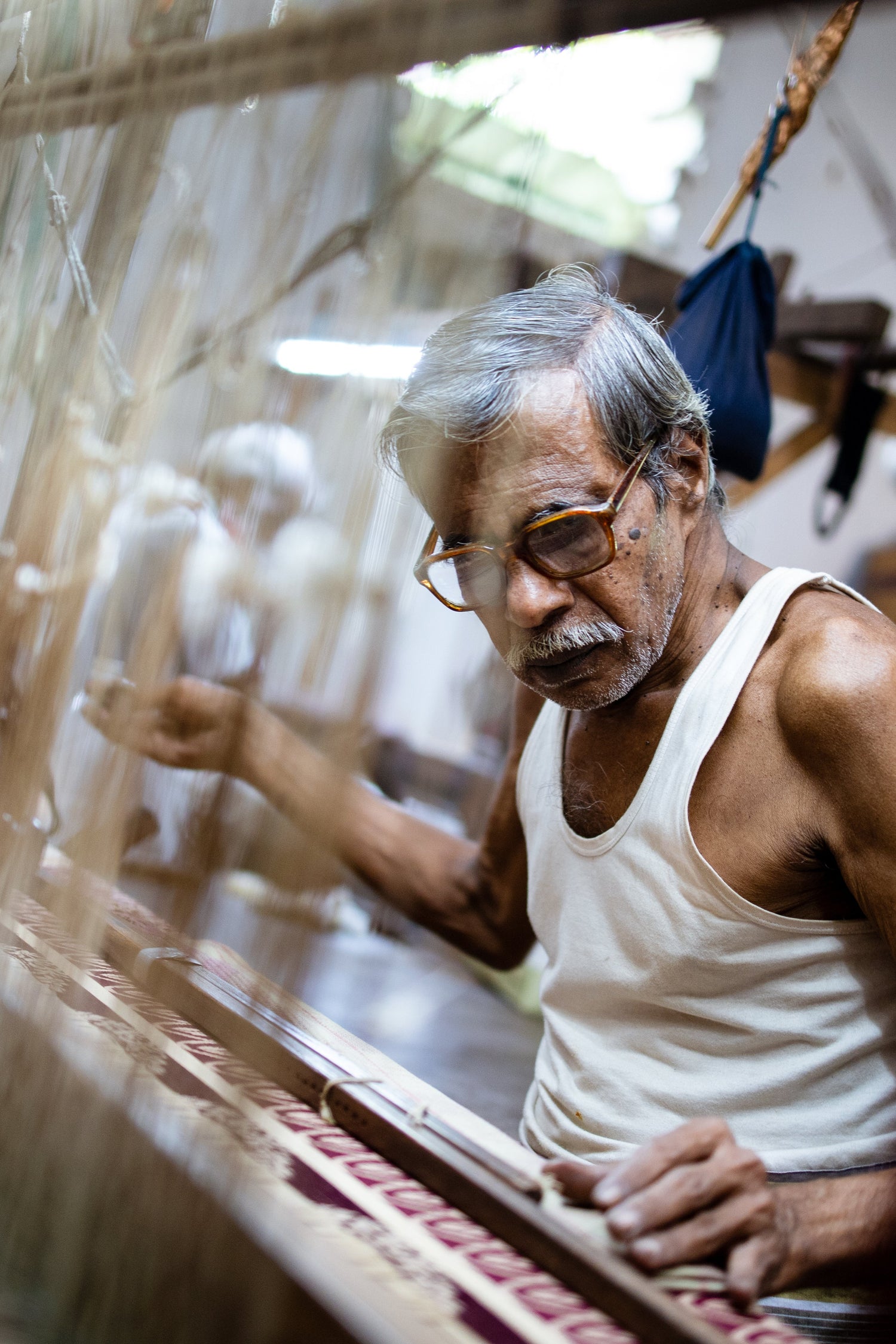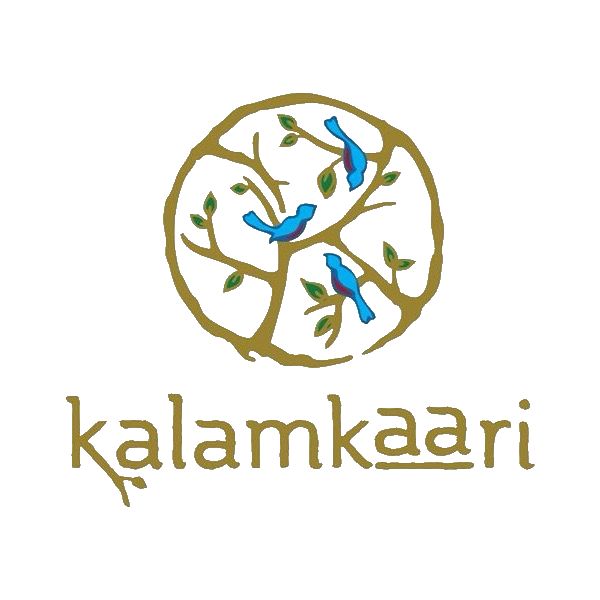Meet the Founder
Meet the Founder
A decade of slowly shaping a small home-grown business into several trunk shows in different parts of the globe into a BRAND, has been nothing sort of work but a slice-of-life. Shruthi Prajosh, a trained advertising and Mass Communication post graduate slowly slipped down into the world of crafts and handlooms rather unknowingly. With a keen interest in literature, craft and media, textiles happened in a year of settling down in the Emirates. In a world of extravagant fashion, Indian clothes and crafts slowly found a niche crowd in the Arab world.
Working in the grassroot level with different artisans and craftsmen has always been an eye opener and has taught quite a lot. Shruthi recollects the- the love for handlooms has not come up in a year or so, “the smell of my grandmom’ steel almirah with scented Brut, neatly stacked crisp cotton Bengal tant & kasavu are one of my most favorite memories. I have seen my mom running to Hantex & Khadi Gramodyog to buy khadis and the best of the Handlooms available during every festive season. Handlooms were always part of life; little did I know in my growing years that I would live the craft.”
Being part of more than 40 clusters and 200+ artisans, she still believes there’s a lot more to do and work for. The love for Handloom and handmade is unexplainable and the joy it gives is immense.
Always know your purchase & love and respect handmade!

The Kerala Kaithari Project
Among the many weaves and crafts that we work on, the one closest to our heart is the one from our native region- the Kaithari Kasavu sarees. Ever since we decided to work with the craftsmen in the grassroot level to know and nurture the craft, we have been part of one of the clusters in Kerala- the Kuthampully kaithari cluster. Kerala’ weaving tradition revolves around 3 main clusters- Balaramapuram kaithari, Kuthampully and Chendamangalam kaithari. There are few others in Northern Kerala but the main weaving happens in the above three clusters and are known for their ‘kasavu sarees’.
Kuthampully a village in Thiruvilwamala of Thrissur district, which is around 50kms from town is known for their kasavu sarees, set-mund, mund-veshti, kaavi mund, thorthu and a lot more. The village welcomes you with the rhythmic musical sound of the working of the looms. Our association with the weavers of Kuthampully is more than 5 years old.
The Kerala Kaithari Project aims to bring life and work to the loom all year around. As kasavu sales revolve around seasonal business of Onam, Vishu and festivals, the loom remains dead during the others and skilled craftsmen thus move to different genres of work. Inorder to bring work to the loom all year around, we introduced colors to kasavu, different new motifs, got inspiration from different other weaves of the country, coordinated masterweavers of different other weaves like Chanderi and such with the skills of Kuthampilly and introduced various new takes of kasavu on the loom. We can proudly say- kalli kasavu, tree of life, colors in kasavu, introduction of pastel shades, korvai technique, Pichwai painting on kasavu, lambani tribal embroidery on kasavu and such are a few to mention.
The weavers of Kuthampully are hardworking and accept new interventions with open arms. Our association has brought in new generation to business rather than moving out to other sectors, who happily endorse and bring up their age-old weaving practices back.
All they need is your support and cooperation in developing interest in our crafts and owning them.
Threads and Traditions
Threads and Traditions
Koranadu sarees:
#Knowyourpurchase
There is a distinct gem of a weave with the name Koranadu. The traditional version was the typical
nine yard which had checks and some had stripes too. The weaver weaves alternate silk and cotton
yarns in both warp and weft. The geographical location of Tamil Nadu having a long coastal stretch
with a lot of humidity in the air plays an important role in making this state suitable for weaving in
cotton, silk, grass, wool etc. cotton is grown in the black soils of Coimbatore, Madurai, Tuticorin,
Tirunelveli, Dindugal and patches of Salem etc. The Koranadu saree is a union fabric made of silk and
coarse cotton yarn, both in warp and weft ways used in a proportion where silk is 2/3 and cotton is
1/3 weight of the saree. Silk adds to its richness and value of the saree and cotton gives the saree
strength and comfort and ease to the wearer. The saree has contrast border and fine tiny checks in
the body. Narrow extra warp designs are used in zari and simple coloured weft stripes in the pallav.
Unfortunately, these sarees are disappearing from the market. Wash and care are very simple where
soaps can be used instead of detergent. Join hands with us to help this weave and weavers survive
the perils of time.
Credits:
Rakhi Janardhanan
Textile Enthusiast
